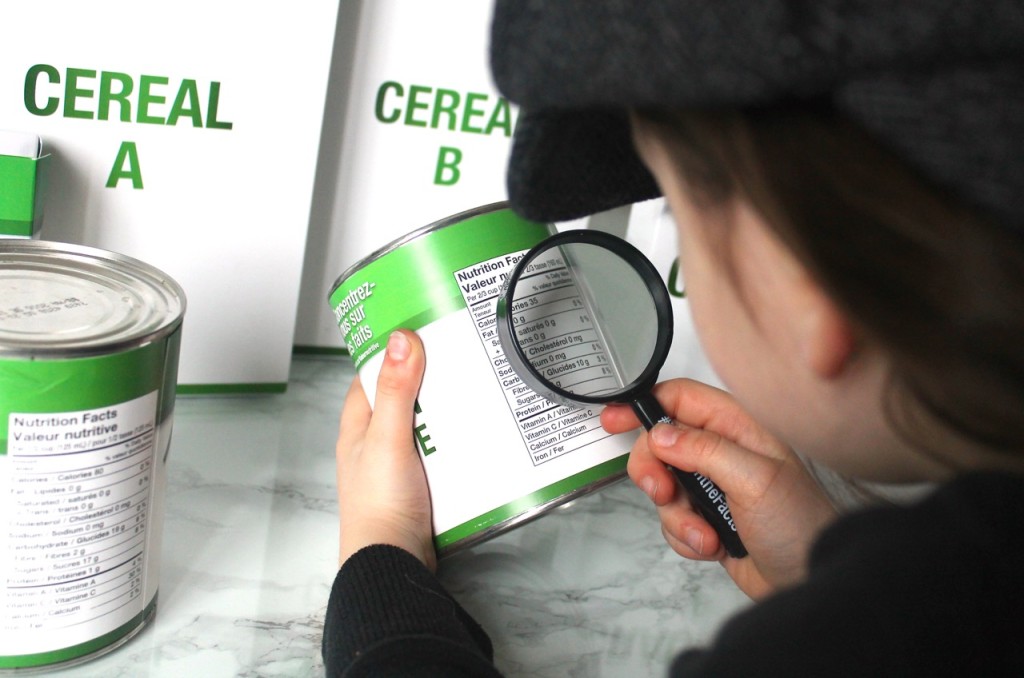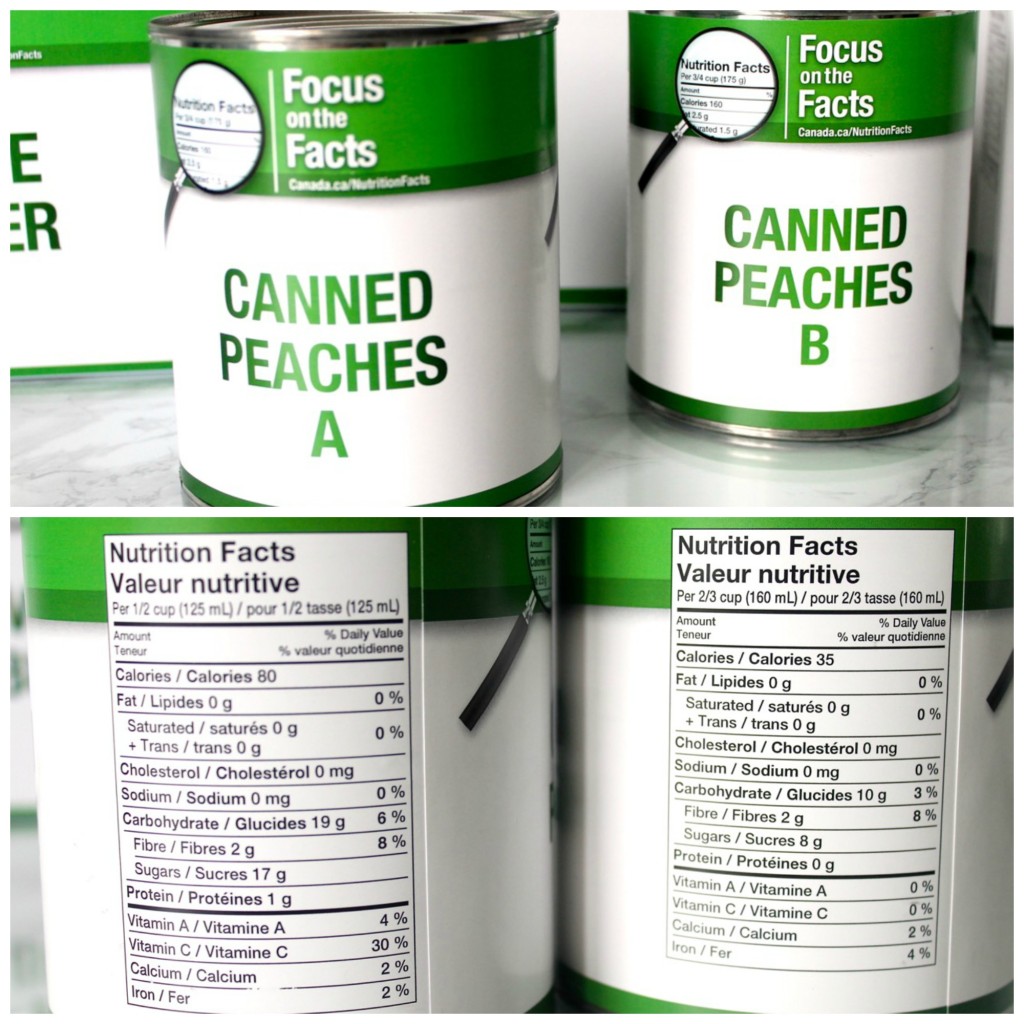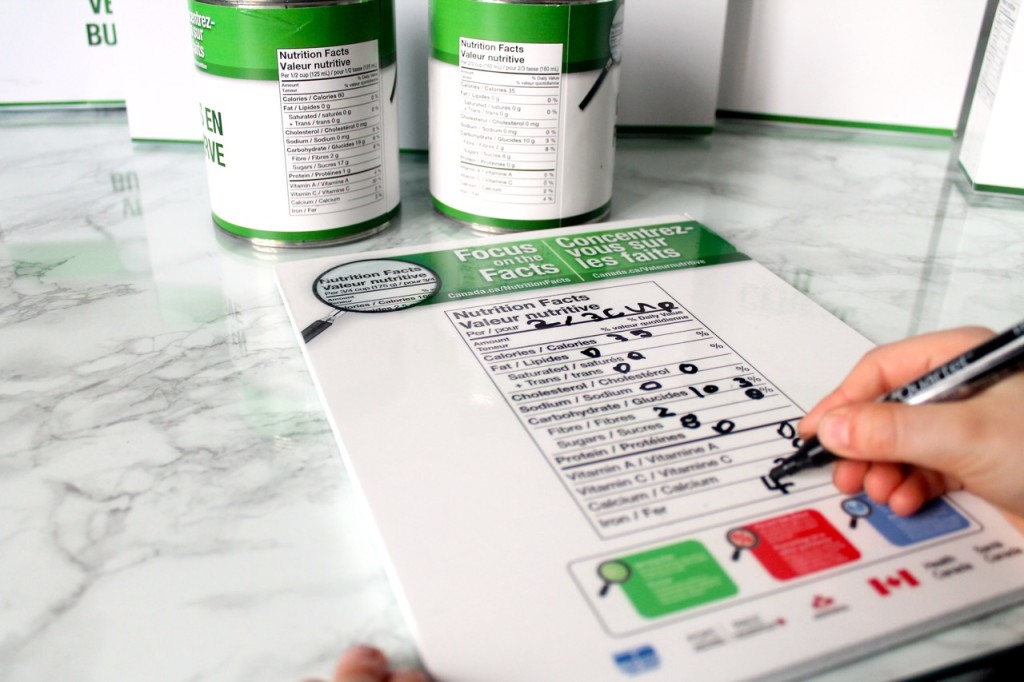We live in a world that is now bombarded with all kinds of health and nutrition information.
“Try this new super food!”
“Get slim with this shake!”
“Low carb diet No carb diet! All carb diet!”
It can honestly be SO overwhelming to know what are the BEST food options out there with all of this contradicting information. We know that we should be eating our fruits and veggies but when it comes to packaged food (even the healthy stuff), it can sometimes be hard to know what is good for you.

Even more so, understanding food facts can be very confusing for children. I know my kids have always relied on me to let them know about what foods are good and which should be avoided. But there are often times when they will want to eat something (usually a sweet treat) and the tears come out because I won’t let them eat it, full well knowing that it’s not good for them.
 Recently, we’ve partnered with Health Canada (and a few others) to have some fun with my kids to help them start understanding the difference with food labels, using the Nutrition Facts Table (NFt), so that they can start to see for themselves, the difference between good and not so good food.
Recently, we’ve partnered with Health Canada (and a few others) to have some fun with my kids to help them start understanding the difference with food labels, using the Nutrition Facts Table (NFt), so that they can start to see for themselves, the difference between good and not so good food.
I put my little detectives to work to see if they could spot the differences in the food labels and ultimately understand which is the better choice.

Starting with the Serving Size that is located right below the NFt title and then using the Percent Daily Value (% DV), they can start to see how even though food might be labelled similarly, some are better than others for our health.
 I think it’s also important to note that when comparing foods, you want to know what is important to you in terms of what is in your food. If I am feeding my kids a canned snack, I want to ensure that they aren’t eating a crazy amount of sugar. They receive a daily multi-vitamin, so higher vitamin intake in canned goods isn’t AS important as what the sugar count is (although still important). So therefore with these canned peaches, I would lean towards Can B as being the better choice for my family, based on the % DV’s.
I think it’s also important to note that when comparing foods, you want to know what is important to you in terms of what is in your food. If I am feeding my kids a canned snack, I want to ensure that they aren’t eating a crazy amount of sugar. They receive a daily multi-vitamin, so higher vitamin intake in canned goods isn’t AS important as what the sugar count is (although still important). So therefore with these canned peaches, I would lean towards Can B as being the better choice for my family, based on the % DV’s.
 As kids are visual learners (and honestly, so am I), we decided to play a fun game using a white board, for them to be able to write out various labels and see the difference for themselves!
As kids are visual learners (and honestly, so am I), we decided to play a fun game using a white board, for them to be able to write out various labels and see the difference for themselves!
We went through all the % DV’s, while I explained to them why we want to make sure we eat foods that are high in vitamins yet low in sugars and trans/saturated fats. Knowing that, they were able to quickly identify which foods were better, using the NFt.

My little detective thought this was very serious business and had a blast checking out the various NFt and % DV’s to figure out which food were better for him to eat. Teaching them to make informed food choices now is something so important that will carry them through the rest of their lives. And making it fun and hands-on for kids is key to getting them interested in learning.

Learning about nutrition shouldn’t be something that is reserved only for adults, but rather, we should want to get our kids involved, from a young age, so that they can start to understand and make their own health conscious choices.
You can join in the fun from your home too with getting your little detectives involved in learning! The Health Canada site is loaded with so many great resources on how to teach your kids about food nutrition and comparing foods using the NFt. They also currently have a quiz going on and you could win free groceries!
Education is important, in every form. But that includes food too. And not just eating healthier foods, but knowing what is in your foods is crucial. Using the NFt and the % DV’s is key in making the best choices for your growing kids!








